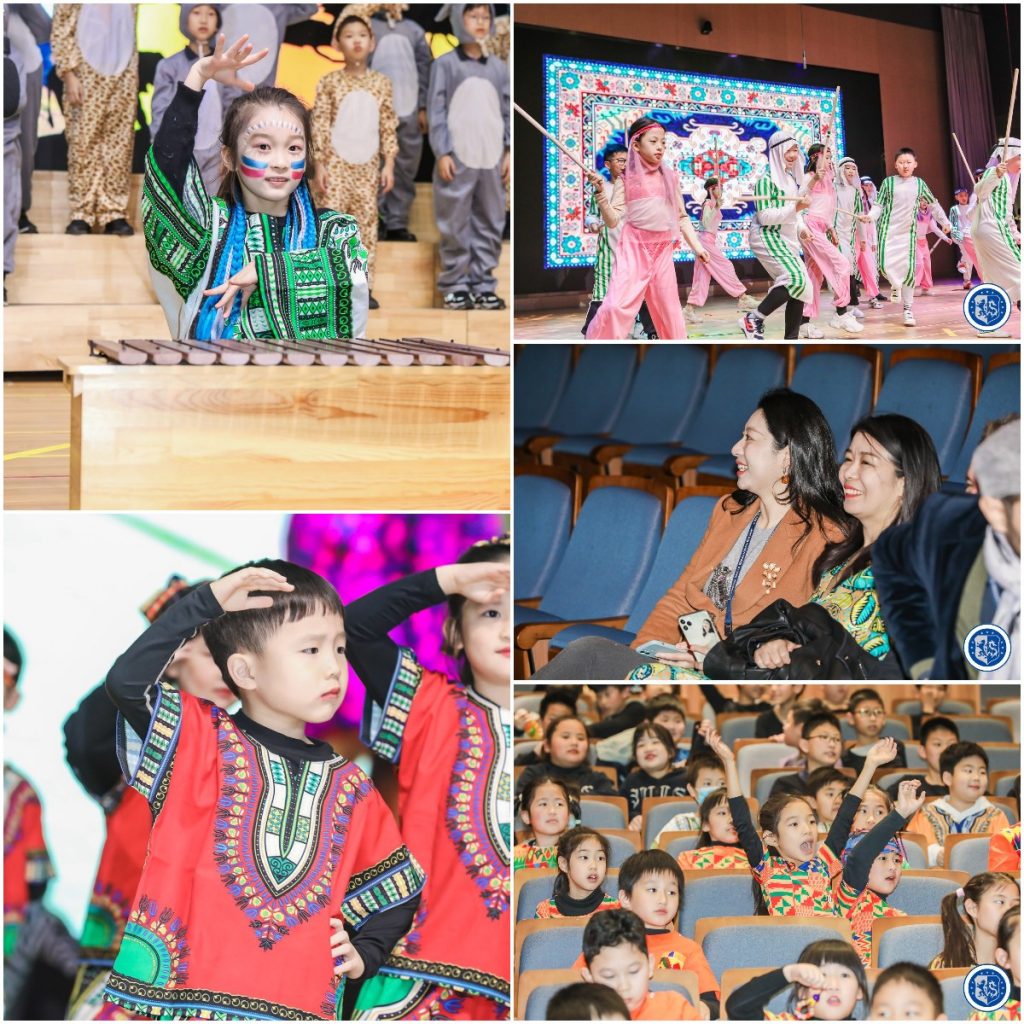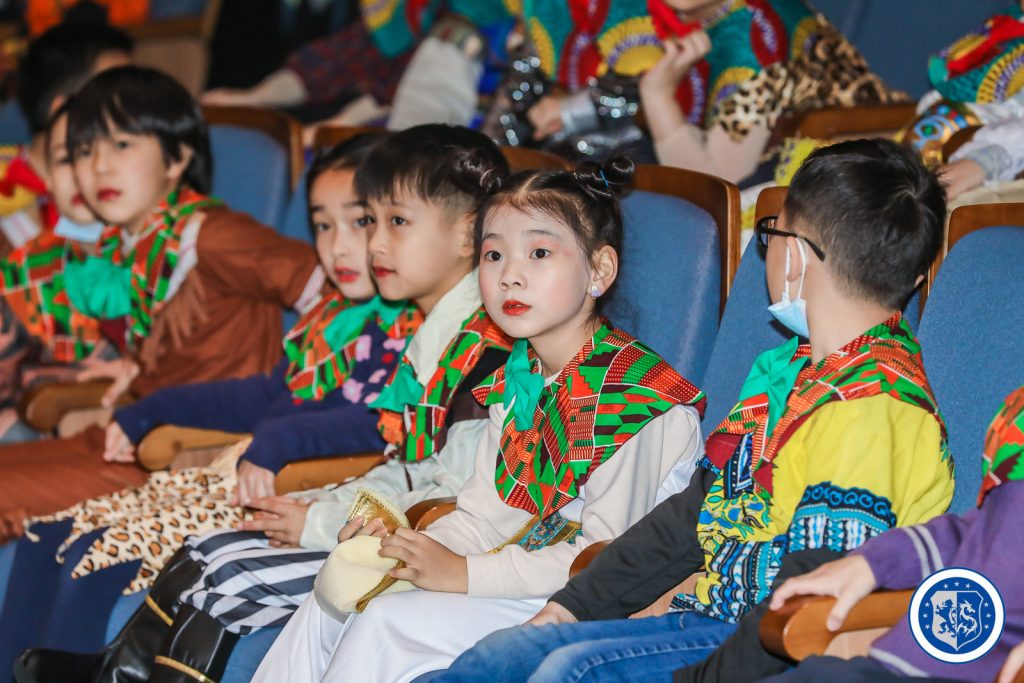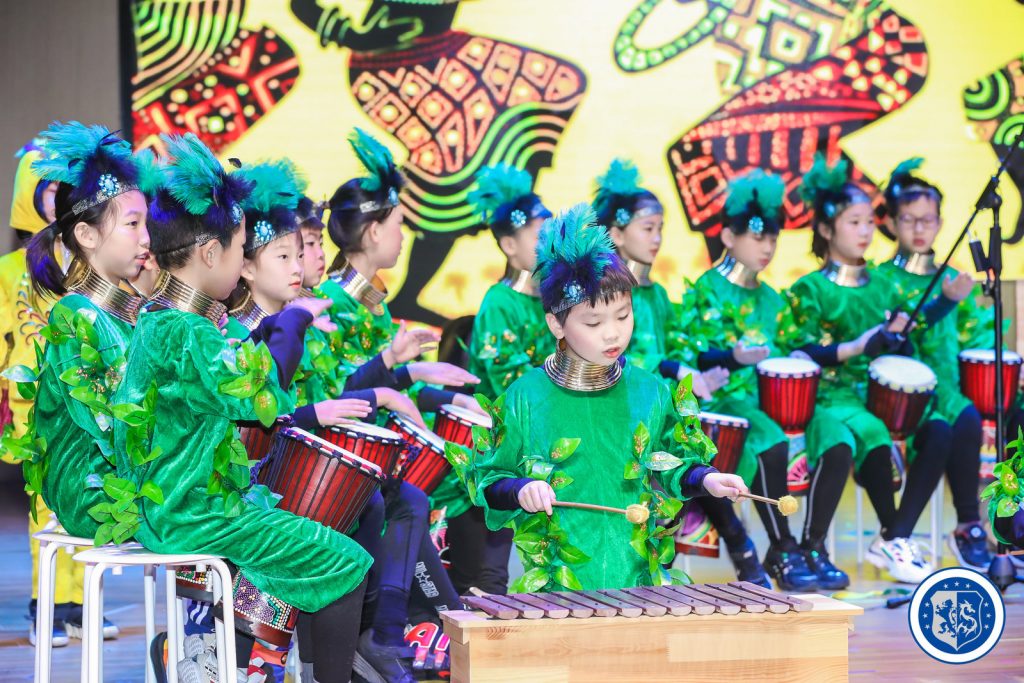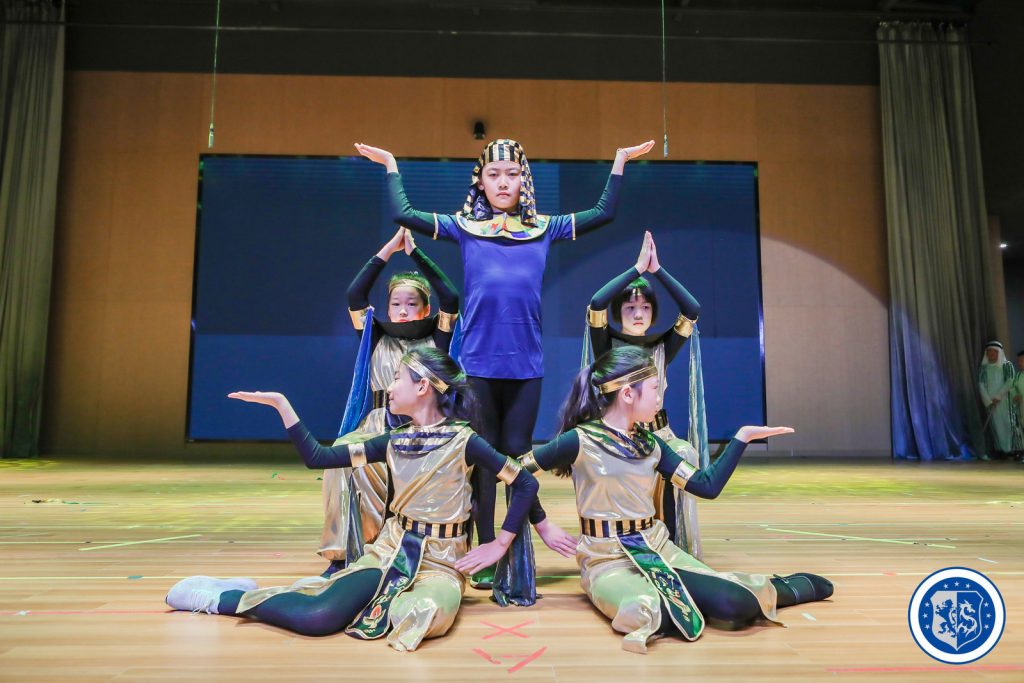As the sun rises above the equator and the waves ripple in the green sea, all things compete.
It has everything from deep forests to vast deserts, dense rivers, snow-capped mountains on the equator, vast prairies, passionate songs and dances, and magnificent art — this is Magnificent Africa.




With the completion of the one-month African Carnival, Primary School teachers and students of SUIS Qingpu welcomed the Closing Ceremony of the African Carnival on Tuesday, December 14th.




Walking through the school’s entrance with its Ancient Egyptian characteristics, the achievements from a month full of African Carnival exploration in various disciplines were on display everywhere: mysterious mummy art, a scene from a rainforest, distinctive paper masks, gorgeous African craft pottery pots! Then, as you proceeded to the entrance of the Theater, you saw student artwork in the form of an African figure statue standing at the entrance. Students’ hand-painted works of South African diamonds and hand-woven Kente cloth also brought deep African style to the stage.




Then, the carnival’s Closing Ceremony – a blend of songs, instrumental music, and dance – slowly commenced. Students from all five grades provided amazing performances, learned through their music classes. The opening performance of “Bolingo” by the Nightingale Chorus brought bursts of applause. The cheerful ensemble of high and low xylophones and African drums was immersive. From South African songs with a sense of nationalism, to Swahili songs, to Congolese folk songs, the students’ voices were as pure as the music of nature. Lively and enthusiastic traditional dances of Uganda, West Africa, and Egypt as well as modern African dance let us personally appreciate the charm of African customs and cultures.





Let’s start an African Carnival Music Festival
Nightingales Choir
Under the guidance of Ms. Mia谢海慧, the piano accompaniment of Ms. Yuliya Hratyla and the conductor Erika Cardona, the Primary School Choir sang the song “Bolingo”, a traditional song from the Republic of Congo and performed by Jill Gallina. This song might have been the most difficult piece sung by our choir until now, but they did an outstanding job with not only the memorization of the lyrics and syncopated rhythms, but also with singing it in a two voices harmony setting.


G1 SING《Zulu Warrior》AB DE GH
“Zulu Warrior Ode” is a famous traditional song of the Republic of South Africa that praises Zulu warriors.
Grade 1 students sang this song with enthusiasm, expressing a common theme from across the world, “Love our nation and country.”




G1 DANCE《MAMA AFRICA》C F I
South African songbird Miriam Makaiba was the country’s first black musician to achieve international fame. She won the Grammy Award for Best Folk Recording, becoming the first African woman to do so.
She was affectionately known as “Mother Africa” because of her good deeds. What does Mother Africa come from? A group of children from France sang her vision and yearning.

With their sweet singing, the children seem to be in the vast and passionate land of Africa as they express their feelings of love for “Mother Africa”.


G2 Singing and Instrumental Ensemble《Jambo Bwana》‘Jambo’ ‘Jambo Bwana’



What language is this? It’s the way Swahili comes from Africa and says hello to everyone. The sophomores energetically played a cheerful rhythm with xylophones and African drums. The singing made us feel as if we had come to Kenya, one of the birthplaces of mankind. The children performed heartily, as if celebrating the festival with Kenyan children.



G2 《Wood》Ugandan dance
在非洲居民,男女老幼,不仅能歌,而且善舞。非洲称为“一个热情奔放的歌舞之乡”。现在我们就跟随这二年级孩子们感受来自非洲东部乌干达的舞蹈。

In Africa, men, women and children, can not only sing well, but can also dance well. Africa is called ‘a land of passionate singing and dancing’. Let us follow these Grade 2 students as they provide a dance from Uganda in eastern Africa.


G3:《Powerful Djembe》
This song is an original piece. Using the djembe to put music to a short video, we experience the story of a child that in the darkness encounters a giant monster.Our 3Bstudents played the djembe in an amazing way. ”



《Masaka》is a famous type of dance performed mainly by children. It had its beginnings in West Africa, emerging as a spontaneous dance in remote villages but is now danced in many places around the continent due to its lively, cheerful and youthful rhythm. The students of Grade 3 worked with care and intensity in order to be able to dance the Masaka properly.




Funga Alafia a welcome song from West Africa that shows how they warmly welcome people from all over the world while wishing them peace. Our students also express their blessings and thanks to all the teachers and students in our school through their performance.




G4《Ceremonial Dance》- 《Saidi》
These two dances are inspired by famous Egyptian traditions. The first dance is called “Ceremonial Dance” and was used in ancient Egypt during religious ceremonies and royal banquets with the Pharaoh.“Saidi” is a folk dance that originated in upper and southern Egypt.
Through the transformation of the two dances, the Grade 4 students not only expressed the sense of dignity of an upper class dinner, but also reflected the warm, ‘down to Earth’ scene of sharing happiness with the people.





G5: 《Banaha》

The melody of this song is very beautiful, andevery time we hear it we think about how hard the local African people work and how happily their children play together.


G5: 《Jerusalema》
The song “Jerusalema” was released in 2019 but the dance element began in Angola in February 2019. The dance then become viral, often repeated as a flash mob and ‘dance challenge’ by people from many countries around the world. Grade 5C students recreated the flash mob, pretending to be… themselves.





Before we knew it, the curtain of the one-month African Carnival had dropped. Through the learning and experiencing of African knowledge and culture, our students learned more about respect, understanding, and love. Let’s all come together for next year’s Carnival event .






